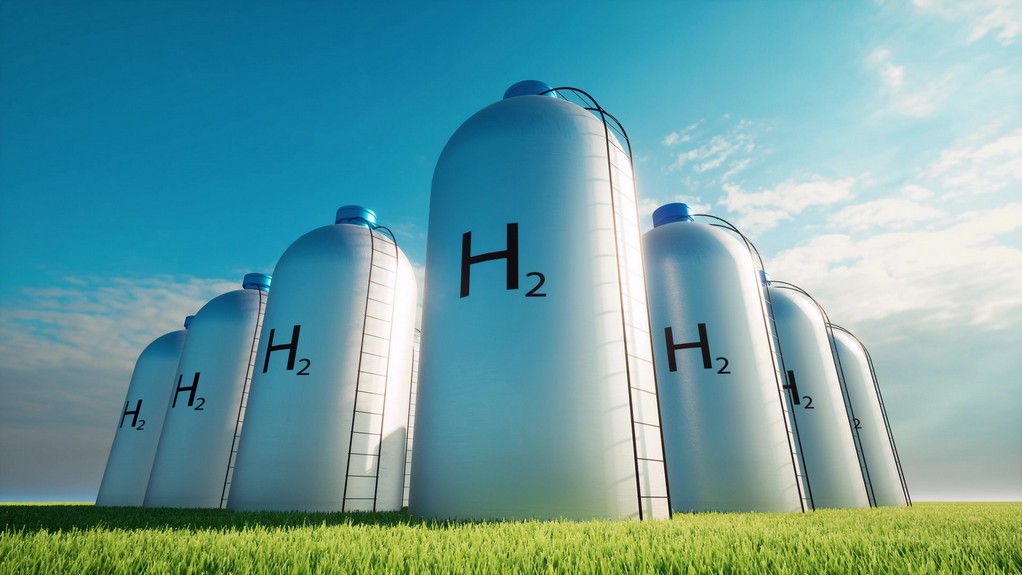Scientists have created a new type of solar panel that could help drive down the cost of sustainable hydrogen. The new solar panel achieved 9% efficiency in converting water into hydrogen and oxygen – mimicking a crucial step in natural photosynthesis.
University of Michigan scientists developed a new kind of solar panel achieving 9% efficiency in converting water into hydrogen and oxygen – mimicking a crucial step in natural photosynthesis. Outdoors, it represents a major leap in the technology, nearly 10 times more efficient than solar water-splitting experiments of its kind.
But the biggest benefit is driving down the cost of sustainable hydrogen. This is enabled by shrinking the semiconductor, typically the most expensive part of the device. The team’s self-healing semiconductor withstands concentrated light equivalent to 160 suns.
Currently, humans primarily produce hydrogen from the fossil fuel methane, using a great deal of fossil energy in the process. However, plants harvest hydrogen atoms from water using sunlight. As humanity tries to reduce its carbon emissions, hydrogen is attractive as both a standalone fuel and as a component in sustainable fuels made with recycled carbon dioxide. Likewise, it is needed for many chemical processes, producing fertilizers for instance. The outstanding result comes from two advances.
The first is the ability to concentrate the sunlight without destroying the semiconductor that harnesses the light. The second is using both the higher energy part of the solar spectrum to split water and the lower part of the spectrum to provide heat that encourages the reaction. The magic is enabled by a semiconductor catalyst that improves itself with use, resisting the degradation that such catalysts usually experience when they harness sunlight to drive chemical reactions.
In addition to handling high light intensities, it can thrive in high temperatures that are punishing to computer semiconductors. Higher temperatures speed up the water splitting process, and the extra heat also encourages the hydrogen and oxygen to remain separate rather than renewing their bonds and forming water once more. Both of these helped the team to harvest more hydrogen.
Some of the intellectual property related to this work has been licensed to NS Nanotech Inc. and NX Fuels Inc., which were co-founded by Mi. The University of Michigan and Mi have a financial interest in both companies.
This is quite the improvement! 9% efficiency might be a new record. What is left to answer would be the costs. One would need a lens of some substantial size, likely a lens steering system and a controlled environment to make it “indoor”.
However, the economics work out, this plus a super economical means to form up nitrogen fertilizer would be a huge contribution to the world economy. That would save the cost of trying to store the hydrogen thus simplify rapid adoption.
Tags: Coversion, Hydrogen, Photosynthesis, Scienetists, University of Michigan



Recent Posts
Hyundai Glovis to Retrofit Seven PCTCs with Avikus AI Navigation System
Super Terminais orders three more Konecranes Gottwald ESP.10 Mobile Harbor cranes
Covestro and HGK Shipping Extend Partnership to 2040 with Focus on Wind-Assisted Vessel Retrofit
Artemis Technologies Successfully Demonstrates 100 Percent Electric Crew Transfer Vessel at Aberdeen Offshore Wind Farm
IACS Council Advances Decarbonisation, Digitalisation and Governance Priorities at C91 Meeting in Beijing
Japan Launches Major R&D Project to Advance Shipbuilding with Alternative Fuels
EU Adopts Emissions Standards for Low Carbon Hydrogen to Bolster Clean Energy Market
Trafigura to Implement ZeroNorth’s AI Platform Across Global Fleet